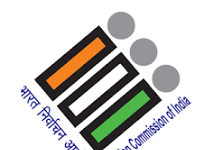The continuous efforts of the Madhya Pradesh government on gender budgeting is one of the reason for rise in the labour force participation rate of women in the state.
For financial year 2022-23, the government has increased the gender budget from 27 percent to 34 percent.
A provision of over Rs. 845.11 crore is made for this in the budget of current financial year.
The funds allocation is done in a total of 403 schemes run by 33 departments. In this budget the schemes of five more departments were included against previous 28 departments.
There are 47 schemes in which 100% women get benefit while 356 schemes are pro-women.
This year 35 departments presented their schemes in the gender related reports including home, finance, transport, sports and youth welfare, industrial policy and investment promotion, farmer-welfare and agricultural development, cooperatives, labour, public health and family welfare, urban development and housing, school education, law and legislative work, panchayat, tribal affairs, social justice and disabled welfare, food civil supplies and consumer protection, culture, tourism, animal husbandry and dairying, fishermen welfare and fisheries development, higher education, technical education, skill development and employment, Bhopal gas tragedy relief and rehabilitation, women and child development, cottage and village industries, medical education, backward classes and minorities welfare, scheduled castes welfare, rural development, horticulture and food processing, AYUSH, nomadic and semi-nomadic, and micro, small and medium enterprises departments were involved.
Also a provision of Rs 50 crore to promote women set up fisheries this will give benefit to them.
In year 2019-20, the labour force participation rate of women was 23.4 percent and in year 2020-21 it increased to 36 percent. In Madhya Pradesh the labour force participation rate of women is increasing regularly since year 2011-12.
The State government is working as per the Union Ministry of Women and Child Development initiative to support institutionalization of Gender Budgeting at the State/Union Territory (UT) level.
In July last, 27 States/UTs have adopted Gender Budgeting and have taken various steps to address gender gaps and advance gender equality.







